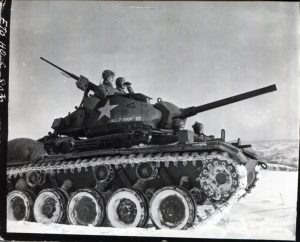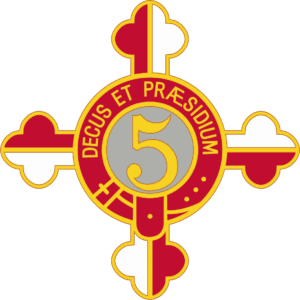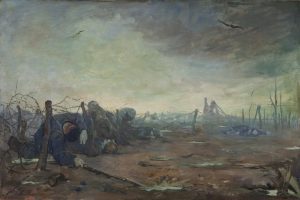Since they were first used in World War II, paratroopers have earned a reputation for their audacity, resourcefulness, cunning and lethality. Airborne units have been called upon to execute rapid strikes, often far behind enemy lines. Their training and missions are some of the most arduous in the military. In the United States Army, renowned units like the 82d and 101st Airborne Divisions have guarded and reinforced this tradition. Largely overlooked in the pantheon of these divisions is the 509th Infantry. This independent airborne infantry unit endured some of the most brutal engagements in the North African and European theaters during World War II. The “Geronimos” initiative and tenacity made them important contributors in ultimately defeating the Nazi war machine.
The precursor unit to the 509th, the 504th Parachute Infantry Battalion, was activated at Fort Benning, Georgia, in October 1941, culling the recently qualified graduates of jump school. In February 1942, the 504th was redesignated as the 2d Battalion, 503d Parachute Infantry. The newly minted paratroopers deployed to Fort Bragg, North Carolina, for additional training. From there, they shipped out to England in June 1942.
In England, the unit fell under the command of the British 1st Parachute Brigade. During combat training, the Geronimos British brethren named them honorary “Red Devils” and granted them the right to don the red beret, which is still worn today.
While staging for Operation Torch on 2 November 1942, the unit was redesignated the 2d Battalion, 509th Parachute Infantry. On 8 November, the 2/509th executed the first American combat airborne operation, and the longest in Army history, by seizing Tafarquay Airport in Oran, Algeria, after a tumultuous 1600-mile flight.
One week later, the 509ers ramped up for its second combat jump into Youks les Bains, near the Tunisian border. Linking up with Free French forces, the Geronimos set out after the German Afrika Korps. The French 3d Zouave Regiment honored the 509th with its regimental crest, a silver badge with a snarling hyena and the motto, “J’y suis – J’y reste” (“Here I Am – Here I Remain”). The badge continues as part of the 509ths uniform today. The 509ers continued operations against the Afrika Korps while also training MG Matthew Ridgway’s untested 82d Airborne Division.
The 509ths push for Europe’s “soft underbelly” began on 14 September 1943. With Allied forces struggling at Salerno, Italy, the 2/509th, under LTC Doyle Yardley, was ordered to make its third combat jump at Avellino, forty miles behind the beachhead, to cut German supply routes. The mission was disastrous for the 509ers, as the 6th Panzer Division tore into the descending paratroopers. For the next two weeks, small groups of men inflicted what damage they could to the Germans. Total casualties for the 509th numbered 123 killed or captured, including Yardley and his entire staff.
With future Special Forces innovator LTC William Yarborough now in command, the 2/509th fought with the 1st Ranger Battalion between October and December 1943 in the mountains near Venafro, Italy. On 10 December, the 509th was reorganized and redesignated the 509th Parachute Infantry Battalion.
The next trial by fire for the 509th was an amphibious assault with the Rangers at Anzio, Italy, on 21 January 1944. Though initially caught off-guard, the Germans reacted to the Allied landings with brutal counterattacks. At Carano, the outnumbered and overwhelmed Geronimos staved off a German advance with continuous fire and, eventually, hand-to-hand combat. Despite being overrun and incurring heavy casualties, the 509th helped to prevent the enemy from overwhelming the Allied beachhead. For its actions at Carano, the 509th earned a Presidential Unit Citation, the first awarded to an airborne unit. CPL Paul B. Huff also became the first paratrooper to earn the Medal of Honor.
Making its fifth combat assault (and fourth combat parachute drop) into Southern France, the 509th pushed north with the Seventh Army from August and November 1944. In December, the Geronimos were dispatched to Belgium and assigned to the 3d Armored Division to stave off the German offensive during the Battle of the Bulge. Between 22 and 30 December 1944, the 509th held its position against powerful German assaults, incurring heavy casualties while inhibiting the enemy’s operational progress. For gallantry at Liege, Belgium, the 509th earned its second Presidential Unit Citation. After the Bulge, only seven officers and 48 enlisted men remained in the battalion. The unit was officially disbanded on 1 March 1945. Many of its survivors were dispatched to the 82d Airborne as replacements. All told, the Geronimos earned two Presidential Unit Citations, several foreign decorations, and eight campaign streamers (with five campaign arrowheads) for their service in World War II.
Reorganized as the 509th Infantry on 1 April 1963 under the Combat Arms Regimental System, the 1/509th Infantry, served with the 8th Infantry Division in Mainz, Germany until it was transferred to Vicenza, Italy, in 1973. After a number or reorganizations in the 1970s and 1980s, the 1/509th today serves as a combat-ready airborne infantry battalion assigned to the XVIII Airborne Corps within U.S. Army Forces Command. It also provides the most realistic and intense warfighting training to light infantry and special operations forces as an opposing forces (OPFOR) unit at the Joint Readiness Training Center at Fort Polk, Louisiana.
© The Army Historical Foundation



